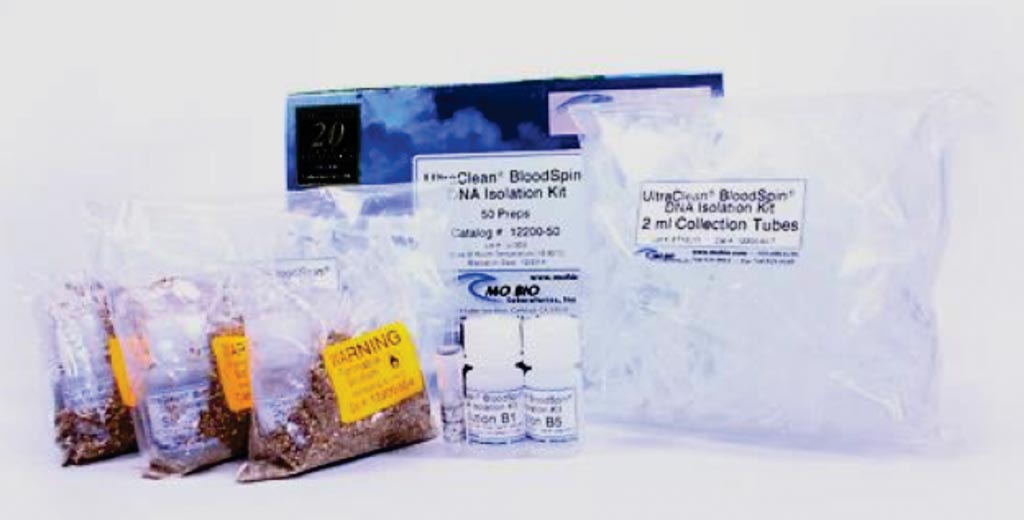Fetal Genetic Variants Implicated in Spontaneous Preterm Birth Risk
By LabMedica International staff writers
Posted on 03 Jul 2019
Preterm live births that take place before 37 completed weeks of gestation and even as early as 22–24 weeks are a global problem. Up to 11.1% (15 million babies) of all births worldwide occur prematurely, and approximately 45% to 50% of them are idiopathic or spontaneous.Posted on 03 Jul 2019
Many pathways and cellular processes are reported to be associated with Spontaneous Preterm Birth (SPTB), including response to infection, regulation of inflammation, stress, and other immunologically mediated processes. A gene has been identified involved in axon guidance, neuronal migration, and inflammation, that appear to coincide with spontaneous preterm birth.

Image: The UltraClean BloodSpin DNA Isolation Kit is designed to isolate genomic and mitochondrial DNA from whole blood (fresh, frozen or stored at 4 °C), buffy coat or cultured cells (Photo courtesy of MO BIO Laboratories).
An international team of Finnish and American scientists led by the Oulu University Hospital (Oulu, Finland) studied a population that included 260 SPTB cases (139 male and 121 female infants) and 9,630 controls (4,055 males and 5,575 females). The cases were very preterm infants born between 25 and 30 weeks of gestation and were clinically defined as SPTB in 2005–2008. In the Finnish cohorts, SPTB was defined as birth occurring after spontaneous onset of labor at <36 completed weeks + 1 day of gestation.
Umbilical cord blood, umbilical cord tissue, or saliva was obtained from the study subjects. Commercial kits were used to extract genomic DNA from blood, or Puregene Blood Core Kit and cord tissue using Qiagen’s Gentra Puregene Tissue Kit. Genome-wide SNP genotyping was performed with the Infinium HumanCoreExome BeadChip. In total, 18 placental samples were analyzed by immunohistochemistry.
The team reported that after replication testing in hundreds more babies born particularly prematurely and thousands of control infants, they were left with a single nucleotide polymorphism (SNP) in the SLIT2 gene that was significantly associated with spontaneous preterm birth, as well as suggestive associations for SNPs in other axon guidance genes. The team's follow-up gene expression, localization, and functional experiments indicated that SLIT2 and ROBO1, which encodes SLIT2's receptor protein, are expressed at higher-than-usual levels in certain parts of the placenta for infants experiencing spontaneous preterm birth.
The most significant association with spontaneous birth involved a SNP called rs116461311 in SLIT2, prompting a series of immunohistochemistry, qRT-PCR, and gene silencing experiments on placental samples or cells that the scientists used to decode SLIT2-ROBO1 interactions and their consequences for birth timing. The authors concluded that based on the currently available evidence they propose that activation of SLIT2-ROBO1 expression and signaling in [placental] trophoblast cells contributes to inflammatory and immune activation, which in turn leads to early labor and preterm birth. The study was published on June 13, 2019, in the journal PLOS Genetics.
Related Links:
Oulu University Hospital







 assay.jpg)





